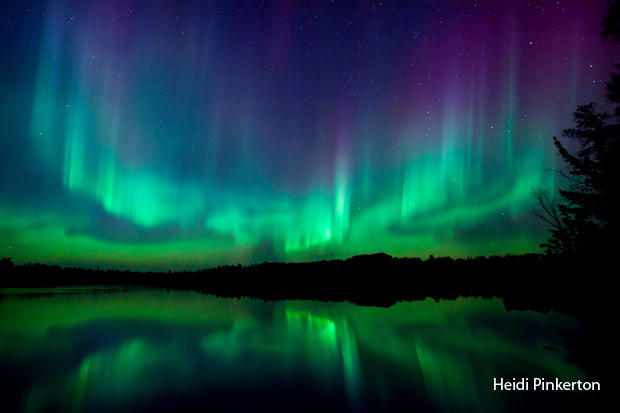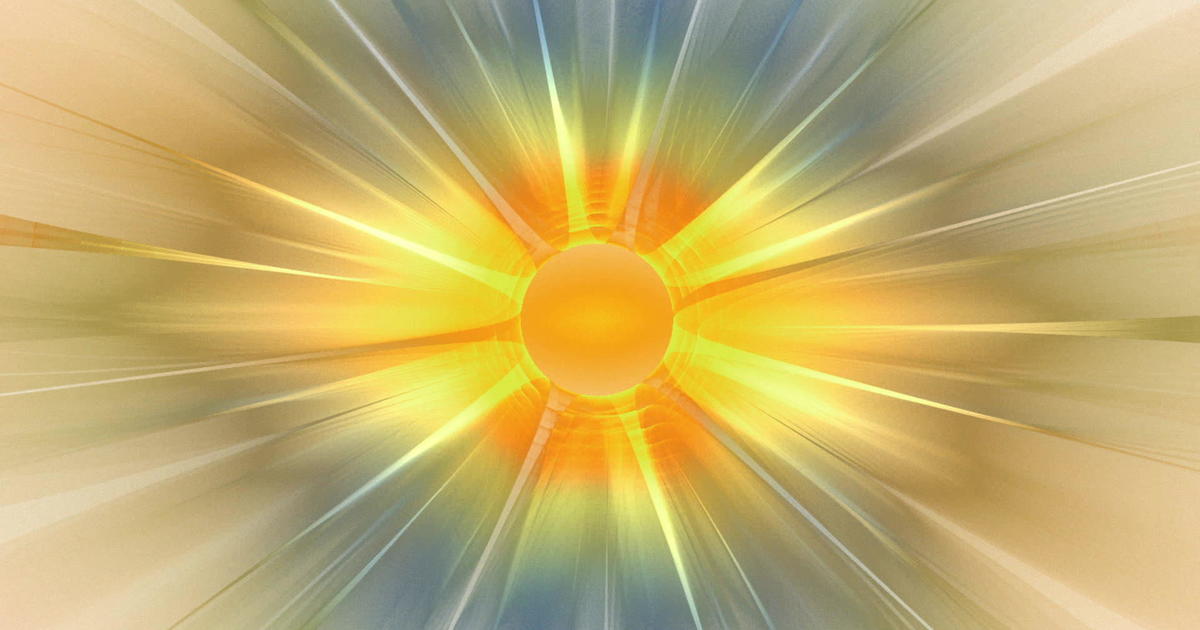Nature up close: Northern Lights
By "Sunday Morning" contributing videographer Judy Lehmberg.
This week's Moment in Nature highlighted the Northern Lights, or aurora borealis. We all know they are stunningly beautiful, but have you ever thought about what they really are, and what causes them?
To understand the Northern Lights, it is first necessary to understand that the sun is made of plasma which is constantly moving around. When various areas of the sun move at different paces, parts of the sun can literally come off and be hurled out into space. When that happens a coronal mass ejection (CME) is said to have occurred.
If the CME is directed at the Earth, it will flow around the Earth's magnetic field until it reaches one of the two poles, where it will be pulled in.
A CME is composed mostly of electrons and some protons. As they travel towards the Earth the electrons collide with nitrogen and oxygen in the upper atmosphere. These two gases can't hold the extra energy and release it as photons of light. When nitrogen releases the energy, it releases a photon in the blue or red range of the spectrum; when oxygen releases the energy, it usually releases a photon of light in the green range.
The color of the northern lights is also determined by where in our atmosphere the electrons hit the nitrogen and oxygen atoms. Oxygen in the higher atmosphere emits red; in the slightly lower altitudes, oxygen emits green, and nitrogen emits blue and red.
Green and pink (a mixture of light green and red) are the most common colors. Because atomic oxygen is found in fairly high concentrations in the upper atmosphere and because our eyes are more sensitive to green light, green auroras are the most common for us to see.
Most auroras occur between 80 to 500 kilometers above the surface of the Earth.
The activity of the sun has been observed for the last few hundred years and is known to have an 11-year cycle of magnetic activity and CMEs. We are currently in the low part of a solar cycle, so auroras are not as extensive now as they will be in several years.
Tips for photographing the Northern Lights:
Because photographing the aurora requires long exposures – 10 seconds or longer – you cannot use a cell phone to photograph them. You must use a DSLR camera, or a camera that has a manual mode with adjustable ISO, ƒ-stop and shutter speed.
Before heading outside into the dark, be sure you know how to change the settings on your camera, and have a headlamp or flashlight.
Set your camera on a sturdy surface, preferably a tripod. Choose a lens with a wide aperture, ƒ/2.8 - ƒ/5.6, and a wide angle, 11 mm - 20 mm. Focus on infinity. You may have an ∞ icon on the lens, or you can use your live view mode to zoom in and focus on a bright star. When you have the focus set, toggle the AF switch to MF and don't touch the focus ring in-between shots.
With your camera in manual mode, set the ISO to 500, the ƒ-stop or aperture wide open (the lowest number possible), and the shutter speed to 30 seconds. These are all ballpark numbers, so be sure to check your results as you start shooting and adjust accordingly. If your photos are underexposed, increase the ISO and/or the shutter speed. If they are overexposed try decreasing the shutter speed. Cameras, lens and the lights themselves vary, so be ready to spend some trial time getting the exposure right.
To avoid camera shake, use a cable release or the timer built into your camera. Release the shutter and check out the shot on the back of your camera.
Judy Lehmberg is a former college biology teacher who now shoots nature videos.
See also:
- To find out when your best chances of seeing the northern lights are, check out spaceweather.com
- More of Heidi Pinkerton's work can be viewed at Root River Photography
- Judy Lehmberg (Official site)
- Judy Lehmberg's YouTube Channel
To watch extended "Sunday Morning" Nature videos click here!









